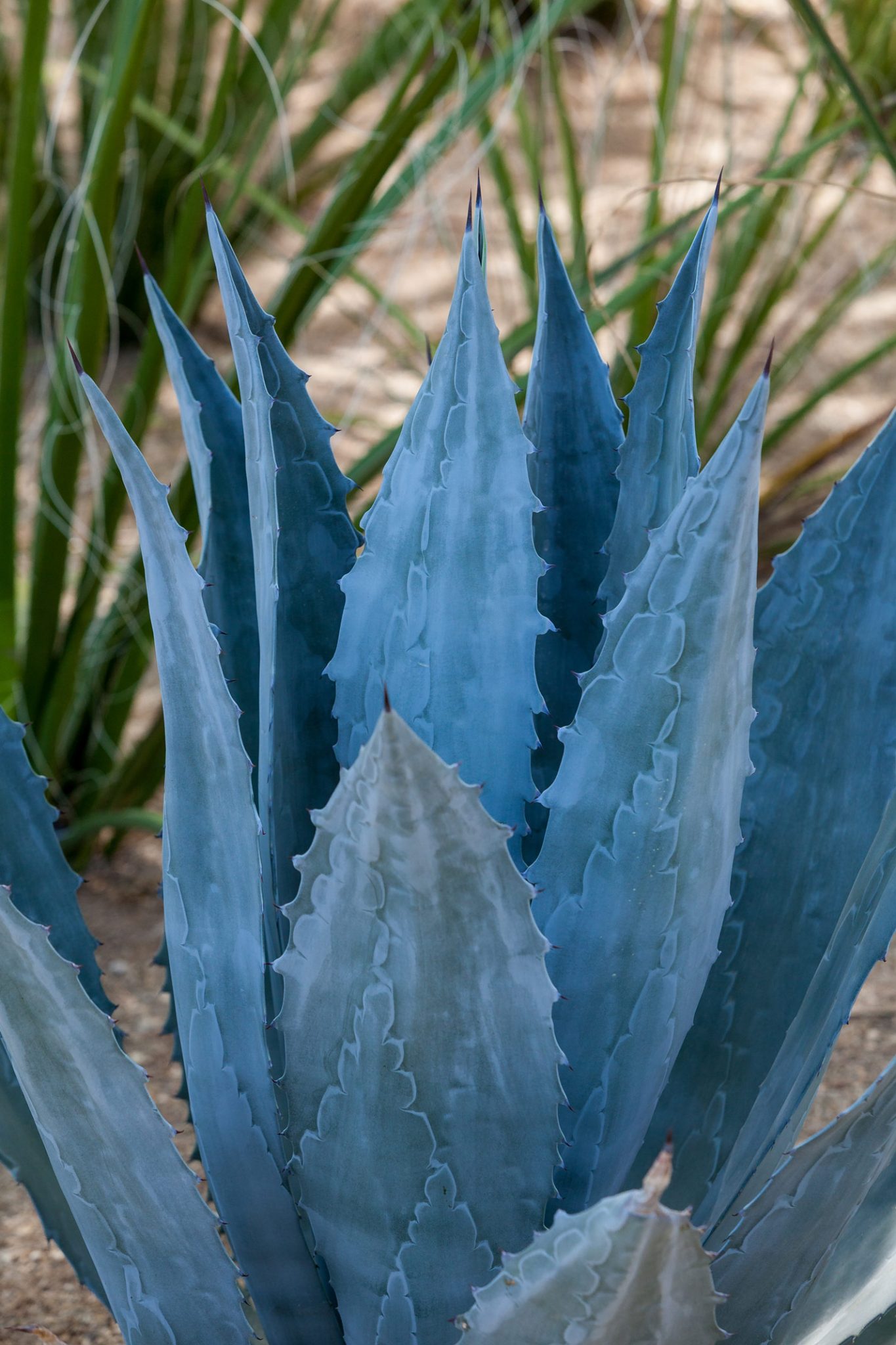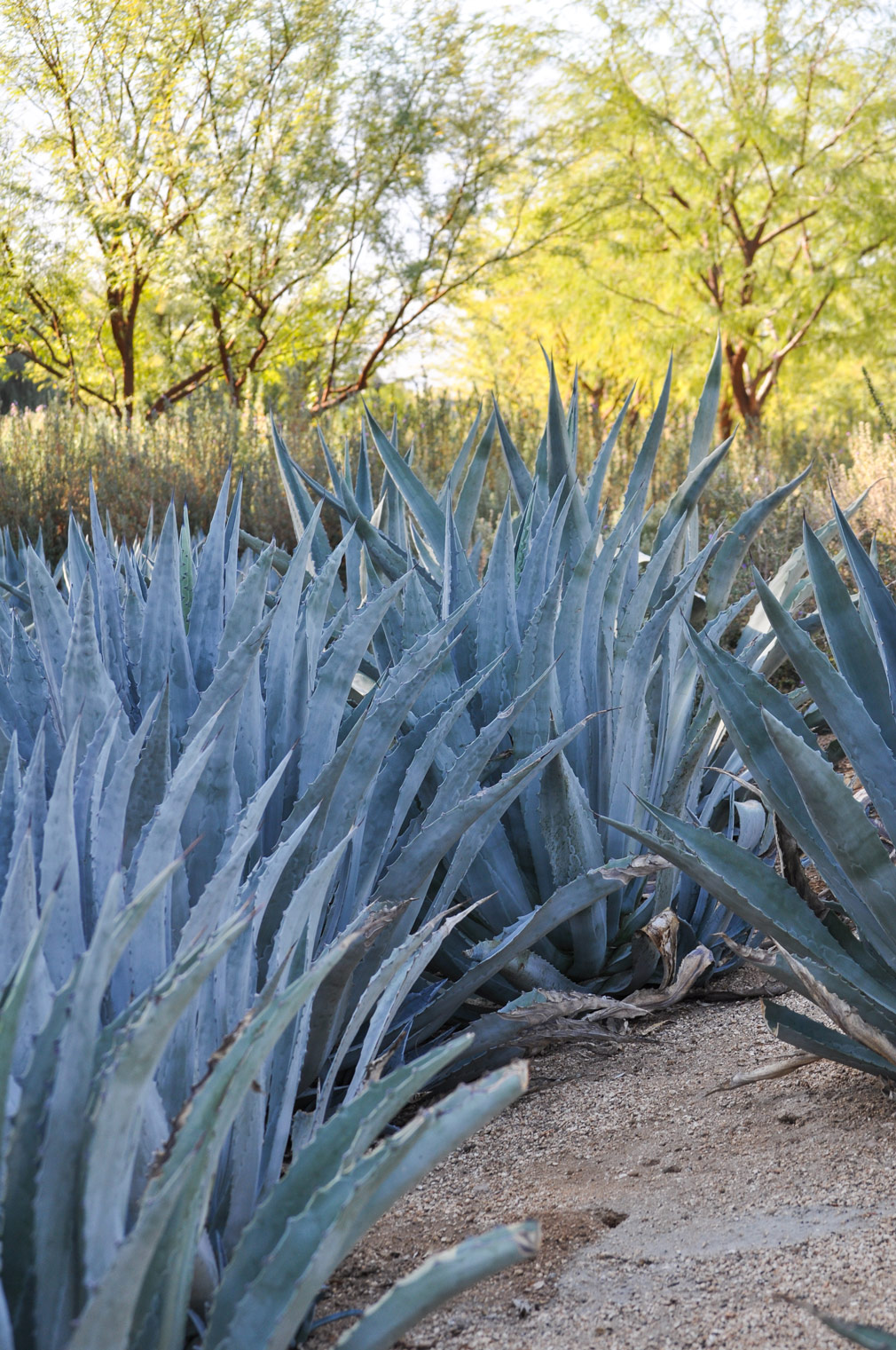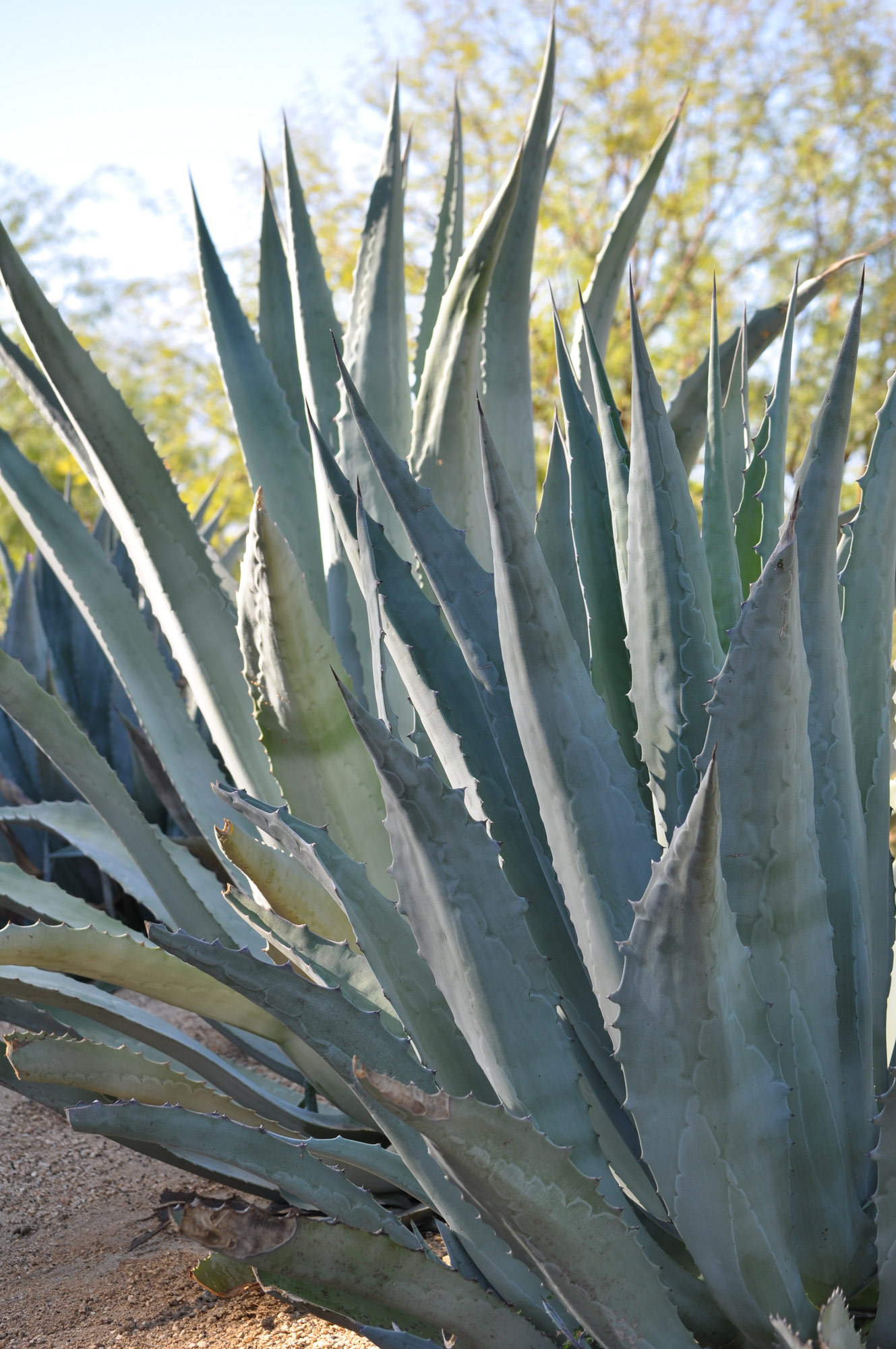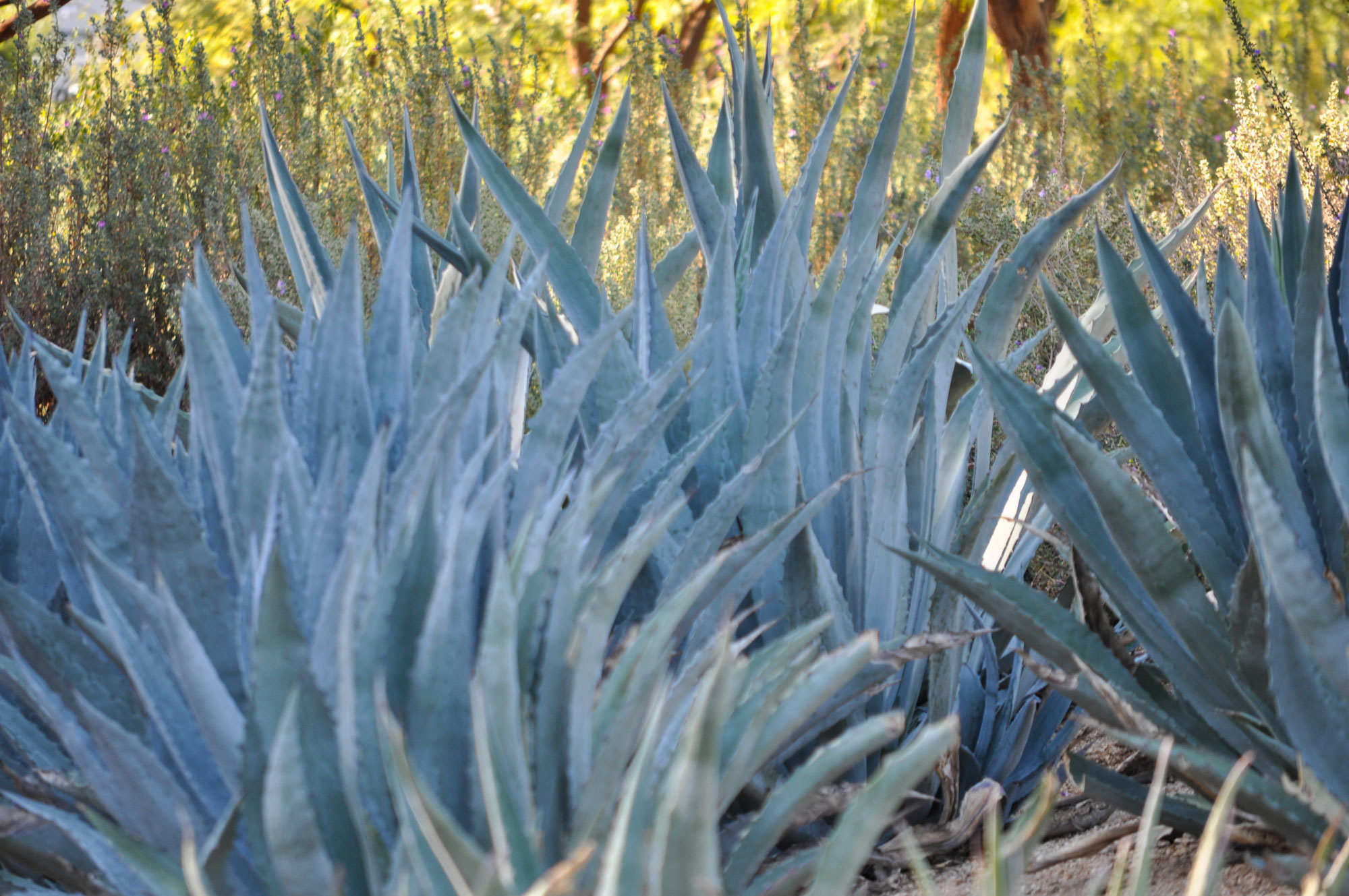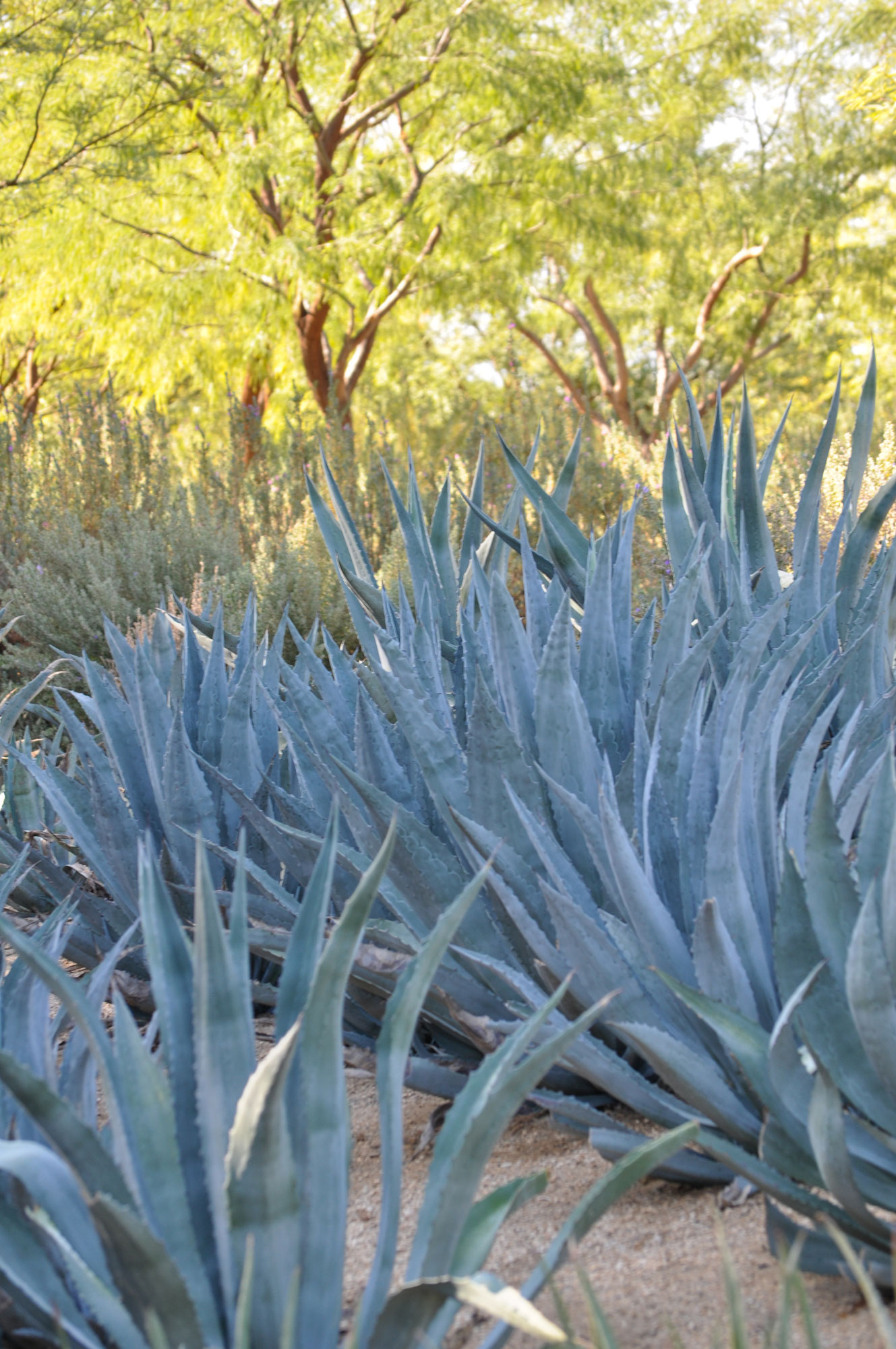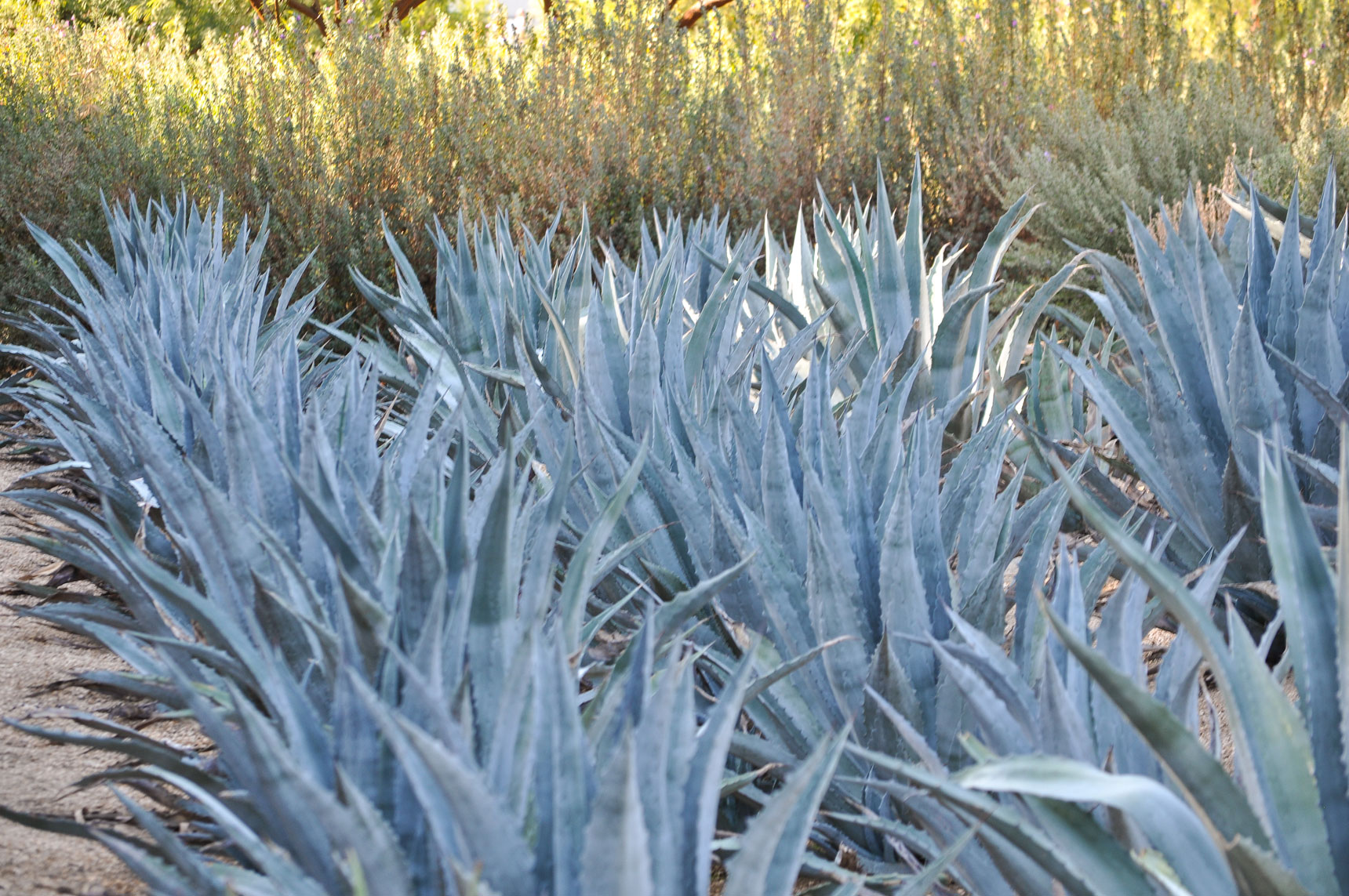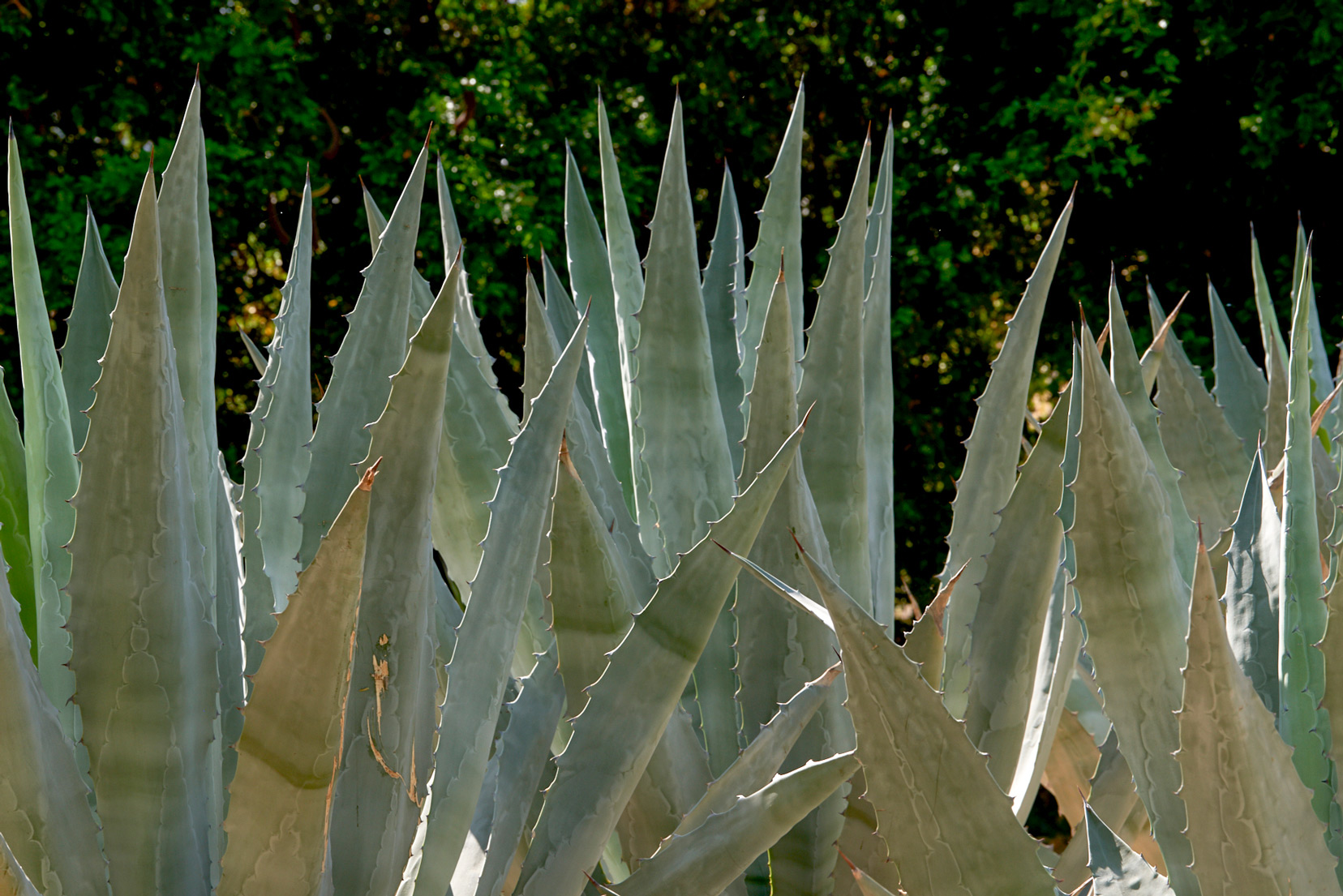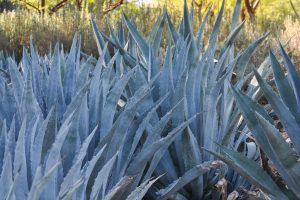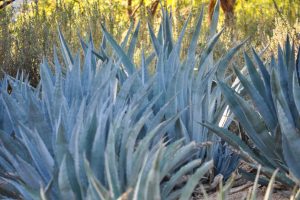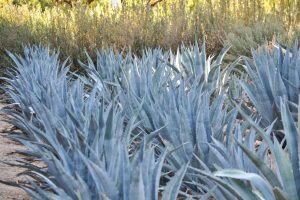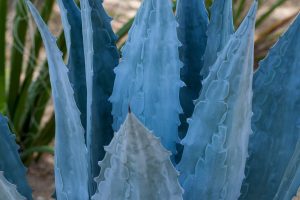The Century Plant, or americana, is the largest agave in the gardens. It’s variable in color, ranging from green to blue-gray, and some varieties displaying variegated leaves. This species is the iconic representation of the genus selected by botanist Carl Linnaeus. It can grow up to 10 feet. The long leaves can recurve dramatically, and leaf margins display brown teeth.
The name Century Plant refers to the monocarpic (one bloom) nature of the genus, where blooms occur only after several years, sometimes up to 30 years, though it may seem like a century for some to bloom.
The inflorescence (flowering stalk) can reach up to 26 feet with 15 to 35 branches on the upper third of the stem. The blooms are yellow and appear in summer. The bloom cycle is dependent on climate and in warmer regions may happen at around 10 years. In cooler climates, it may take up to 35 years to bloom. The plant will die after that bloom but has likely produced many clones around its base in the meantime.
Its distribution is uncertain but widespread.
